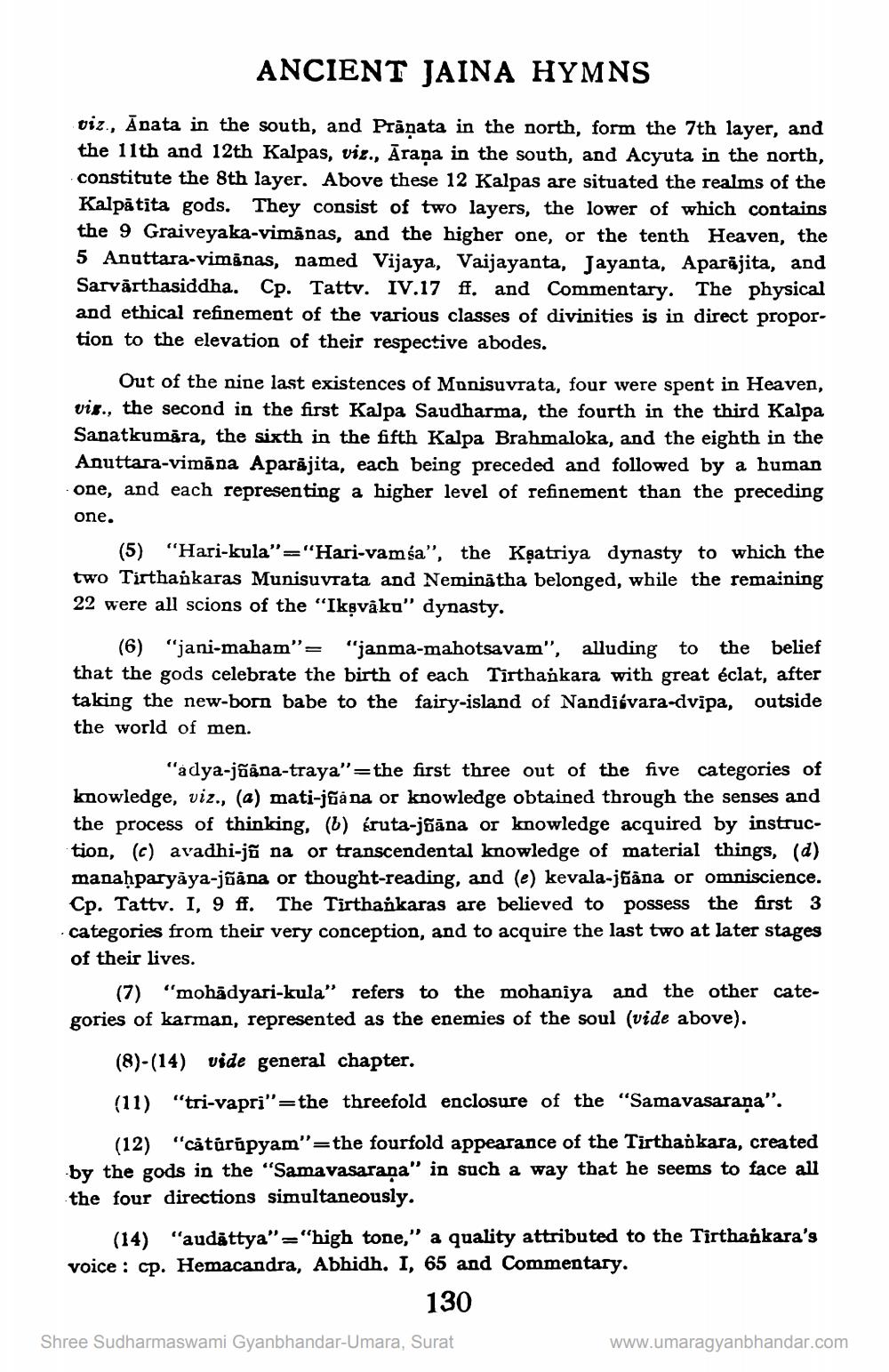________________
ANCIENT JAINA HYMNS
viz., Ānata in the south, and Pranata in the north, form the 7th layer, and the 11th and 12th Kalpas, viz., Ārana in the south, and Acyuta in the north, constitute the 8th layer. Above these 12 Kalpas are situated the realms of the Kalpätita gods. They consist of two layers, the lower of which contains the 9 Graiveyaka-vimånas, and the higher one, or the tenth Heaven, the 5 Anuttara-vim nas, named Vijaya, Vaijayanta, Jayanta, Aparajita, and Sarvärthasiddha. Cp. Tattv. IV.17 ff. and Commentary. The physical and ethical refinement of the various classes of divinities is in direct proportion to the elevation of their respective abodes.
Out of the nine last existences of Munisuvrata, four were spent in Heaven, vis., the second in the first Kalpa Saudharma, the fourth in the third Kalpa Sanatkumära, the sixth in the fifth Kalpa Brahmaloka, and the eighth in the Anuttara-vimāna Aparajita, each being preceded and followed by a human
each representing a higher level of refinement than the preceding one.
(5) "Hari-kula"-"Hari-vamsa", the Kgatriya dynasty to which the two Tirthankaras Munisuvrata and Neminátha belonged, while the remaining 22 were all scions of the "Iksvako" dynasty.
(6) "jani-maham"= "janma-mahotsavam", alluding to the belief that the gods celebrate the birth of each Tirthankara with great taking the new-born babe to the fairy-island of Nandiśvara-dvipa, outside the world of men.
"adya-jãåna-traya"=the first three out of the five categories of knowledge, viz., (a) mati-j6á na or knowledge obtained through the senses and the process of thinking, (6) śruta-jñāna or knowledge acquired by instruction, (c) avadhi-jő na or transcendental knowledge of material things, (d) manaḥparyāya-jõäna or thought-reading, and (e) kevala-jfâna or omniscience. Cp. Tattv. I, 9ff. The Tirthankaras are believed to possess the first 3 categories from their very conception, and to acquire the last two at later stages of their lives.
(7) "mohadyari-kula" refers to the mohaniya and the other categories of karman, represented as the enemies of the soul (vide above).
(8)-(14) vide general chapter.
(11)
"tri-vapri"=the threefold enclosure of the “Samavasarana".
(12) "cåtürápyam"=the fourfold appearance of the Tirthaikara, created by the gods in the "Samavasarana" in such a way that he seems to face all the four directions simultaneously.
(14) "audättya"="high tone," a quality attributed to the Tirthankara's voice : cp. Hemacandra, Abhidh. I, 65 and Commentary.
130
Shree Sudharmaswami Gyanbhandar-Umara, Surat
www.umaragyanbhandar.com




